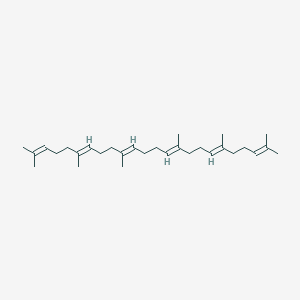3D bioprinting models transform cancer drug development and tumor therapy
-
Last Update: 2021-02-09
-
Source: Internet
-
Author: User
Search more information of high quality chemicals, good prices and reliable suppliers, visit
www.echemi.com
University of Minnesota have developed a way to study cancer cells, which could lead to new and more effective treatments. They have developed a new way to study these cells in in-body 3D models. In the study, recently published in Advanced Materials, Dr. Angela Panoskaltsis-Mortari, associate director of research at the University of Minnesota School of Medicine, professor of pediatrics, director of the 3D Bioprinting Equipment Department and a member of the Masonic Cancer Center, and her assistant researchers found that cells behave differently in these 3D flexible tissue environments than on 2D plastic or glass surfaces.
" model is closer to the cell's environment in the body. Panoskaltsis-Mortari said. Therefore, studying the effects of drugs on cells at this level is more meaningful and closer to the body's environment than studying them in 2D models. "This 3D angiotic tumor tissue provides a new platform for identifying and screening potential cancer drugs. What's more, the model also provides a new way to study metastasis tumor cells.
the success of the model is that we can have more control over the environment. Fanben Meng, a postdoctoral fellow at the University of Minnesota's School of Science and Engineering, said. We can control the release of chemicals more slowly, creating a chemical gradient that allows cells to react in a way that is closer to the body. All of this thanks to our personalized 3D printing technology, which allows us to precisely control the location of cell clusters and chemical libraries in 3D environments. Researchers
focus on lung cancer and melanoma. They then integrate more types of cells, especially immune cells and cell therapy, and study these interactions.
" detection of cancer drugs and cell therapy are two of the most well-known concepts at the University of Minnesota, and using this model we can take these innovations to the next level. Dr. Daniel Vallera, a member of the Massonic Cancer Center at the University of Minnesota, said. Studies like this produce important results, such as revealing the relationship between blood vessels and drugs, because this is a modular product that you can add other elements to make it more advanced. You can even use the patient's own tumor cells in this model. " (Bio Valley)
This article is an English version of an article which is originally in the Chinese language on echemi.com and is provided for information purposes only.
This website makes no representation or warranty of any kind, either expressed or implied, as to the accuracy, completeness ownership or reliability of
the article or any translations thereof. If you have any concerns or complaints relating to the article, please send an email, providing a detailed
description of the concern or complaint, to
service@echemi.com. A staff member will contact you within 5 working days. Once verified, infringing content
will be removed immediately.







